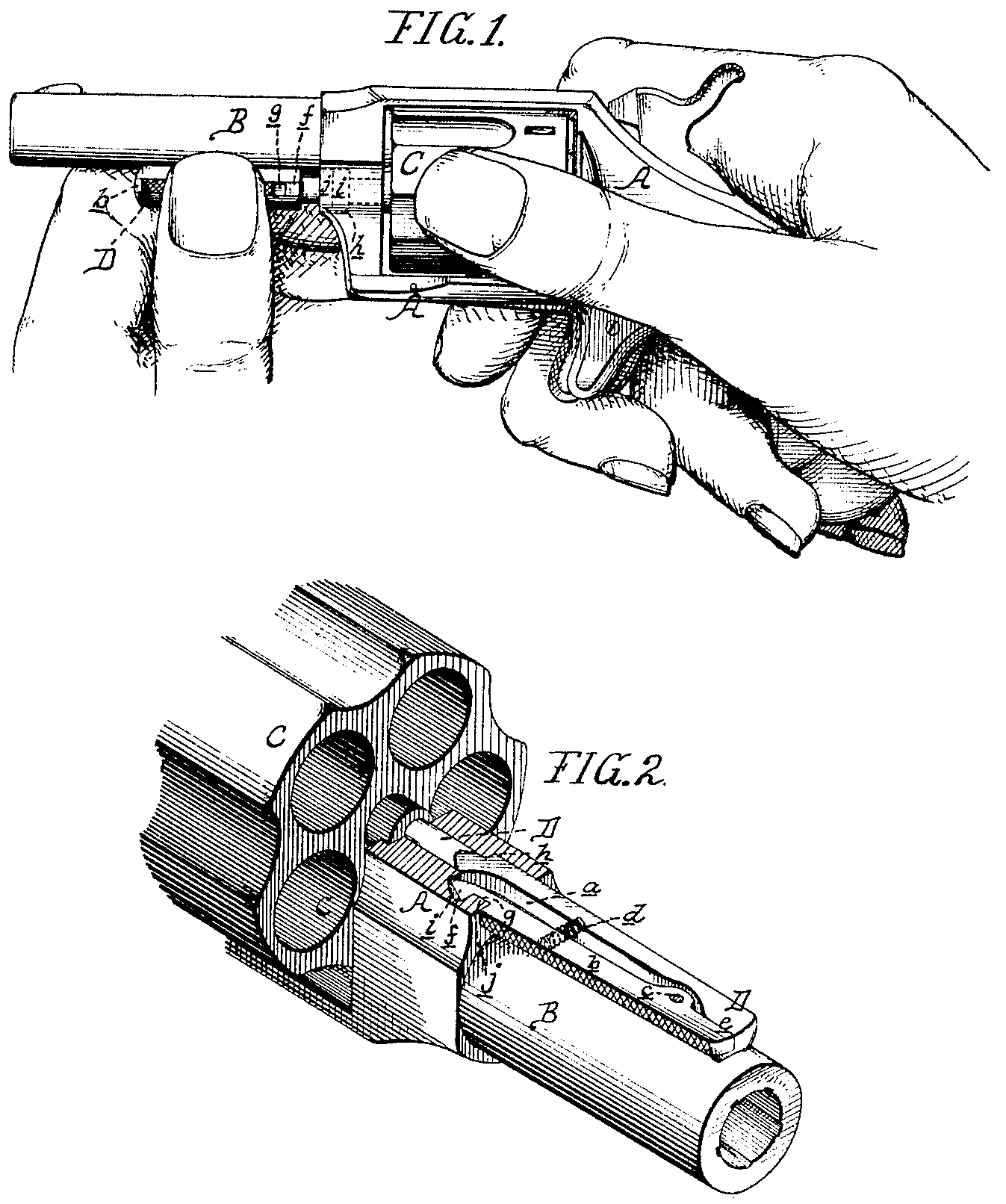US 239914
UNITED STATES PATENT OFFICE.
ROLAND L, BREWER, OF PITTSTON, ASSIGNORTO J. FRANKLEE, OF WILKES BARRE, PENNSYLVANIA.
IMPROVEMENT IN REVOLVING FIRE-ARMS.
SPECIFICATION forming part of Letters Patent No. 239,914, dated April 5, 1881.
Application filed January 29, 1880.
To all whom it may concern:
Be it known that I, Roland L. Brewer, of Pittston, Luzerne county, State of Pennsylvania, have invented a new and useful Improvement in Catches for Base-Pins of Revolving Fire-Arms, of which the following is a specification.
The object of my invention is to securely lock the base-pin of a revolving fire-arm in such a manner that the base-pin can be readily and easily inserted and withdrawn when necessary; and this object I attain in a manner too well described hereinafter to need preliminary description, and shown in the accompanying drawing, in which—
Figure 1 is a side elevation of a revolving fire-arm with my improvement. Fig. 2 is an enlarged sectional perspective view, showing the arrangement of parts; and Fig. 3 is an enlarged sectional view.
A is the frame, B the barrel, C the cylinder, of a revolving fire-arm. D is the base-pin, ex tending through both the frame and cylinder, an enlarged portion of which enters a short distance into the frame and projects from the same beneath the barrel B. In the enlarged portion of the base-pin D is cut a slot, into which is fitted the lever b, this lever being pivoted to the base-pin D a short distance from the end of the same by a pin, c, passing through both base-pin and lever, Confined within the slot and entering into recesses in both the base-pin and lever is a spring, d, operating to throw the lever out beyond the face of the base-pin, this outward motion of the lever being limited by the abutment e within the slot a. Upon the opposite end of the lever is an inclined portion, f, and notch g, which enter into the recess h of the frame. Within the recess h of the frame is cut a groove, i, corresponding to the notch g of the lever l in the enlarged portion of the base-pin when the base-pin is in position.
The base-pin is inserted into the frame and through the cylinder and pushed through until the enlarged portion of the same begins to enter the recess h of the frame, when the inclined end f of the lever b strikes against the edge of the recess h, and depresses the lever l into the slot a until the base-pin is pushed in so that the inclined portion cars the groove i, when the lever is pushed out of the slot and the notch g is engaged with the projecting portion j of the recess h of the frame, owing to the action of the spring d, thereby securely locking the base-pin D in position. (See Figs. 2 and 3.)
In order to remove the base-pin D for the removal of the cylinder C, the operator takes hold of the enlarged projecting portion beneath the barrel, and in so doing depresses the lever b within the slot a, and thereby dis. engages the projecting portion j of the recess h of the frame from the notch g, when the base pin D can be readily pulled out and the cylinder removed. (See Fig. 1.)
It will be seen that while the base-pin can be easily inserted and removed it cannot be come accidentally detached and lost or jarred out while firing the fire-arm.
What I claim as my invention is—
The combination, in the manner described, with the enlarged projecting portion of the base-pin 3, of the lever b, pivoted to the base pin within the slot at of the same, acted on by the spring d, and engaging within the recess h of the frame A, so that the lever l is disengaged from the frame A and the base-pin is free to be removed by the act of catching hold of the same.
In testimony whereof I have signed my name to this specification in the presence of two subscribing witnesses.
ROLAND L. BREWER.
Witnesses:
Thos. H. Atherton,
J. Wroth, Jr.

